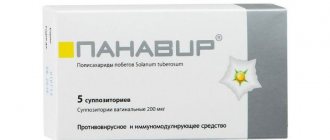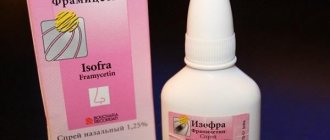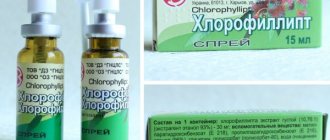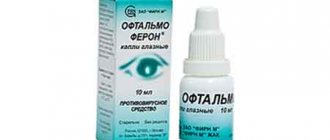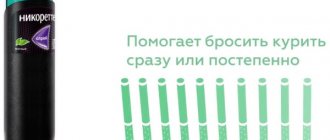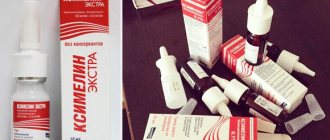- January 9, 2020
- Other drugs
- Svetlana Saksina
Gel "Vibrocil" belongs to the pharmacological group of decongestants and other rhinological drugs. Due to its antiallergic and vasoconstrictive effects, it is used to treat diseases of the ENT organs. The article will discuss instructions for using the product, as well as its analogues.
Release form
Vibrocil is available in three different forms:
- Drops , which are a yellow or colorless solution. This transparent liquid is bottled in glass bottles with a pipette cap of 15 milliliters.
- Spray. It is also a transparent solution without foreign impurities, colorless or yellowish. One bottle contains 10 ml of the drug.
- Gel. This form of the medicine looks like a homogeneous yellow or colorless substance. It is packaged in 12 gram tubes.
All types of medicine smell of lavender, but this smell is not strong. This medication is not available in other forms (ointment, suppositories, syrup, tablets).
Vibrocil
Active substance:
Dimetindene*, Phenylephrine*
Pharmgroup:
Alpha adrenergic agonists in combinations
Average price in pharmacies
| Name | Manufacturer | average price |
| Vibrocil 15ml nasal drops | GlaxoSmithKline | 300.00 |
Analogs for the active substance:No data on synonyms | Application area:Abdominal surgery Adenomectomy Allergic rhinopathy Allergic rhinosinusopathy Allergic rhinosinusopathy Allergic rhinosinusopathy Allergic diseases of the upper respiratory tract Allergic respiratory diseases Allergic runny nose Allergic rhinitis Allergic rhinitis seasonal Balloon coronary angioplasty Vaginal hysterectomy Vasomotor rhinitis Corona bypass Viral rhinitis Interventions on the vagina and cervix Bladder interventions Intervention in the oral cavity Inflammation of the nasopharynx Inflammation of the paranasal sinuses Inflammation of the nasal mucosa Inflammatory disease of the nose Inflammatory diseases of the paranasal sinuses Restorative and reconstructive operations Hand hygiene of medical personnel Gynecological surgery Gynecological interventions Gynecological surgeries Hypovolemic shock during surgery Purulent-inflammatory processes of the paranasal sinuses Purulent sinusitis Purulent rhinitis Disinfection of purulent wounds Disinfection of wound edges Diagnostic interventions Diagnostic procedures Diathermocoagulation of the cervix Long-term allergic rhinitis Long surgical operations Nasal congestion Nasal congestion due to colds and flu Replacing fistula catheters Difficulty in nasal breathing Difficulty in nasal breathing due to colds Difficulty in nasal breathing Difficulty in nasal breathing due to colds Infectious and inflammatory disease of ENT organs Infectious and inflammatory disease of ENT organs Infectious and inflammatory diseases of the ENT organs Infection during orthopedic surgery Sinus infection Artificial heart valve Catarrhal inflammation of the nasopharyngeal region Catarrhal inflammation of the nasopharyngeal region Catarrhal inflammation of the paranasal sinuses Cystectomy Combined sinusitis Short-term outpatient surgery Short-term operations Short-term surgical procedures Cricothyroidotomy Blood loss during surgery Bleeding during surgery and in the postoperative period Year-round allergic rhinitis Year-round allergic rhinitis Year-round or seasonal allergic rhinitis Year-round rhinitis Year-round rhinitis of allergic nature Culdocentesis Laser coagulation Laser coagulation Laser coagulation of the retina Laparoscopy Laparoscopy in gynecology CSF fistula Minor gynecological operations Minor surgical interventions Mastectomy and subsequent plastic surgery Mediastinotomy Microsurgical operations on the ear Mucogingival surgeries Nasal hypersecretion Stitching Runny nose Runny nose, vasomotor allergic Minor surgeries Neurosurgical operation Immobilization of the eyeball in ophthalmic surgery Exacerbation of hay fever in the form of rhinoconjunctival syndrome Exacerbation of sinusitis Exacerbation of sinusitis Ozena Acute respiratory infection with symptoms of rhinitis Orchiectomy Complications after tooth extraction Acute inflammation of the paranasal sinuses Acute allergic rhinitis Acute bacterial sinusitis Acute rhinitis Acute rhinitis of various origins Acute rhinitis with thick purulent-mucous exudate Acute nasopharyngitis |
Compound
In each form of Vibrocil, two ingredients are active. One of them is represented by phenylephrine, contained in one milliliter of liquid preparation (drops, spray) and in 1 gram of gel in an amount of 2.5 mg. The second active component of the drug is dimethindene. In spray and drops it is contained in a dose of 0.25 mg per 1 ml, and in the gel this amount of substance is found in 1 gram of medicine.
Additionally, nasal drops and Vibrocil in the spray contain lavender oil (it is this that provides the solution with a pleasant aroma), citric acid, sodium hydrogen phosphate and sorbitol. Also, such preparations contain benzalkonium chloride and purified water. The nasal gel contains the same substances in the form of auxiliary compounds, but hypromellose is also added to them.
Overdose
When overdosed with the drug Vibrocil, nasal spray, it can cause sympathomimetic and anticholinergic effects such as increased heart rate, shortened heart rate, pain in the body, tremor or tremor, mild tachycardia I, movement of arterial pressure, mydriasis, numbness, awakening, hallucinations, seizures, sleeplessness and bliss. Overdosing with the drug may result in mild sedation, confusion, increased nausea, or even nausea, nausea, and vomiting.
No serious side effects were identified after episodic use of Vibrocil. Vipadkova's use of doses of dimetindene up to 20 mg in the intestinal tract did not result in the appearance of severe symptoms.
Likuvannya:
stagnation of the active vugilla, possibly, of carrying benefits for young children (washing the vugilla is not required); Adults and older children appreciate the great quantity of water for drinking.
Phenylephrine-induced arterial hypertension, which results in an insufficient response to benzodiazepines, can be treated with a stasic alpha-adrenergic blocker.
Central anticholinergic symptoms can be treated with additional physiostigmine. It is important to consult your doctor thoroughly before the antidotes stop. The fragments were completely destroyed in the scolio-intestinal tract with doses of dimethindene over 20 mg daily, patients with significant overdose indications should have medical advice to prescribe a medicine, taking a single dose of activated vugill.
Severe episodes of anxiety and seizures should be treated with benzodiazepines.
Operating principle
ENT doctors use Vibrocil as a local remedy because its active ingredients act as follows:
- Thanks to phenylephrine, which can activate adrenergic receptors in the vascular walls, the drug causes vasoconstriction in the mucous membrane of the paranasal sinuses and nasal passages. This helps reduce swelling of the mucous membrane, as a result of which the medicine effectively copes with nasal congestion.
- Dimetindene, present in the composition, affects H1 receptors that are sensitive to histamine (an allergy mediator). This determines the antiallergic effect of Vibrocil, but does not impair the function of the ciliated epithelium located in the nasal passages.
"Aquamax"
As an active component, Aquamax spray contains sodium chloride. Some indications for use differ from the main drug discussed in this article - Vibrocil gel. The drug is prescribed:
- after surgical interventions in the sinuses and nasal cavity;
- to eliminate dry nasal mucosa;
- as an adjuvant in the treatment of allergic, medicinal, atrophic and infectious rhinitis with local vasoconstrictors.
The only limitation for use is hypersensitivity to the active and auxiliary components of the drug. Aquamax is approved for use in the treatment of children (under adult supervision), pregnant women and nursing mothers.
Despite the fact that the indications for the use of analogues are the same as those for the Vibrocil gel, before replacing the drug you should consult a doctor.
Indications
Medicine recommended:
- For rhinitis, as a symptom of a cold.
- For a runny nose caused by allergens.
- For a runny nose with a chronic course.
- For vasomotor rhinitis.
- For nasopharyngitis.
- For chronic or acute sinusitis.
- As one of the drugs for complex treatment of otitis media.
- As a component of complex drops for adenoids.
- Before surgical treatment in the area of the paranasal sinuses or nasal passages, as well as after such surgery.
Nasal gel is especially in demand for nasal injuries, crusting or excessive dryness in the nose. This medication option is also used to prevent nasal congestion at night.
"Galazolin"
The gel contains xylometazoline as an active ingredient and excipients.
The drug is prescribed for the treatment of:
- acute rhinitis of bacterial or viral origin;
- acute and chronic sinusitis;
- allergic rhinitis;
- acute otitis media (as an auxiliary component).
Contraindications for use are:
- hypersensitivity to the components of the drug;
- angle-closure glaucoma;
- pregnancy;
- children up to 4 months old.
There are two types of Galazolin gel - 0.05% and 0.1%. The first is used to treat children under 12 years of age, the second - for adults and children over 13 years of age. A single dose is equal to one press of the bottle with the drug. It should be used every 8-10 hours for 3-5 days. The course of treatment should not exceed 10 days.
Contraindications
Vibrocil cannot be used if:
- The child was diagnosed with angle-closure glaucoma.
- The rhinitis that a child suffers from is atrophic.
- The little patient cannot tolerate phenylephrine, dimethindene or any other component of the medication.
Treatment should be prescribed with special attention to children who:
- Increased blood pressure.
- The rhythm of the heartbeat is disturbed.
- Hyperthyroidism.
- Diabetes.
- Epilepsy.
Vibrocil price
You can purchase Vibrocil at your nearest pharmacy; a prescription from a doctor is not required when making a purchase. You can check the availability and cost of the drug in advance on specialized Internet resources. The price range for different forms of the drug in Moscow pharmacies is as follows:
| Release form | Price, rubles |
| Drops 15 ml | 215-396 |
| Spray 15 ml | 265-420 |
| Gel, 12 g | 258-416 |
Side effects
Sometimes a child’s body “responds” to treatment with Vibrocil with the following side effects:
- A burning sensation in the nose that occurs after administration of the medication into the nasopharynx.
- Discomfort in the nasal passages.
- Excessive dryness of the nasopharyngeal mucosa.
- Bleeding from the vessels of the nose.
In addition, using the medication for too long can cause addiction, which is manifested by nasal congestion and increased runny nose after stopping the medication.
Possibility of using the drug during pregnancy and after childbirth
Vibrocil nasal spray cannot be used during pregnancy. This is stated in the abstract. However, there are situations when a woman needs medication. In this situation, the doctor must take into account the possible risks and negative effects on the fetus, and then compare them with the potential benefits for the mother.
During lactation the medicine can be used. However, you should not exceed the indicated dosage and extend the course of therapy yourself. This can cause unpleasant consequences.
Instructions for use
- Treatment with Vibrocil is recommended after cleaning the child’s nasal passages.
- To put drops in your baby's nose, you need to tilt his head back a little. When the drug is administered, it should be kept in this position for a few more minutes.
- To inject the spray, the child's head must be positioned straight, and the sprayer must be held in an upright position with the tip pointing upward. Having inserted the tip into the nostril, you need to make a sharp short movement, squeezing the sprayer. After removing the tip from the nose, the nebulizer can be unclenched. When the injection is carried out, you need to ask the child to take a small breath through his nose.
- It is recommended to lubricate the nasal passages with nasal gel as deeply as possible. The last treatment is best done before bedtime so that the effect of the drug provides the child with free nasal breathing throughout the night.
- The frequency of use of any form of Vibrocil is usually three times a day, but the doctor may recommend treating the nasal cavity four times.
- How many days to drip the medicine, inject it into the nose or lubricate the mucous membrane with gel, should be determined by the doctor, but continuous therapy with any of the medications should not exceed one week. If Vibrocil has been used for seven days, but there is no desired effect, you need to contact your pediatrician to select another treatment.
Single dose
Drops
If the age of a small patient is 1-6 years, then 1-2 drops of medicine should be injected into each nostril of the child in one instillation. If the child is over six years old, administer 3 drops or 4 drops.
Spray
One or two injections of the drug into each nasal passage.
Apply a small amount of the drug to the mucous membrane of the inner surface of each nasal passage as deep as possible.
special instructions
- The drug should not be used for more than one week without consulting a doctor.
- Newborns and infants may be given Vibrocil only as prescribed by a doctor.
- Strictly adhere to the daily dose, otherwise you can provoke the development of symptoms of systemic action.
- It is recommended to use the product with caution and under medical supervision for diseases such as:
- diabetes;
- epilepsy;
- thyroid diseases;
- pathologies of the heart and blood vessels: hypertension, arrhythmia, atherosclerosis;
- increased intraocular pressure;
- obstruction of the bladder neck;
- hyperthyroidism.
If sleep disturbances, dizziness, arrhythmia, increased blood pressure, or tremors of the limbs appear during treatment, you should consult a doctor.
Overdose
Too high a dose of the medicine or its accidental ingestion by a small child can cause systemic effects such as rapid heartbeat, increased blood pressure, nausea, fatigue, trembling, headache, nervous agitation, pale skin and others. To eliminate them, it is recommended to drink plenty of fluids (if the child is over 6 years old), take sorbents, laxatives, adrenergic blockers and other medications prescribed by the doctor.
Reviews
Most of the reviews about Vibrocil are represented by positive impressions of parents from treatment with this drug. They emphasize the quick effect of such a remedy for nasal congestion and runny nose. Most often, drops are purchased for children, which are praised for their pleasant smell and ease of use. According to mothers, babies tolerate this medication generally well. As for the disadvantages of Vibrocil, these include a short course of treatment, a short-lasting effect, and the high price of the drug.
Side effects
Ensure that the drug is well tolerated. Adverse reactions, which are less likely to occur, are divided according to frequency as follows: very often (≥ 1/10), often (range ≥ 1/100 to <1/10), infrequently (range ≥ 1/1000 to <1/100), rare (from ≥ 1/10000 to < 1/1000), very rare (< 1/10000), unknown frequency (cannot be determined based on available data).
Disorders on the side of the respiratory system, organs of the chest and mediastinum: rarely - discomfort in the nasal passages, dryness of the nasal passages, nosebleeds.
Underlying disorders and reactions at the injection site: rarely - liver sensation at the injection site; very rarely – blatant weakness, development of allergic reactions (cramps, masculine reactions on the side of the skin, itching of the body, swelling of the face, irritation).
Analogs
Medicines with the same composition as Vibrocil are not produced, so if necessary, pediatricians prescribe other vasoconstrictors to replace this medication, for example:
- Nazol Baby. This medication, available in drops, is approved for use even in infants, for example, in children aged 3 months. The basis of this drug is phenylephrine.
- Adrianol. Such drops contain 2 components - trimazoline is added to phenylephrine. The drug is made in two different concentrations. Drops for children treat runny nose from the age of three.
- Nazivin. This medication contains oxymetazoline and is available in drops with different concentrations of the active compound, as well as in a spray. A medicine with 0.01% oxymetazoline is approved for use in infants.
- Otrivin. This xylometazoline-based drug is produced in the form of a spray in two dosages. A product containing 0.05% of the active ingredient is prescribed from the age of two.
The attending physician will help determine which is the best substitute for Vibrocil for a particular child, because each vasoconstrictor medicine has its own characteristics of use. Many children require several medications at once; for example, children with a runny nose are often additionally prescribed medications based on sea water or sodium chloride.
Some mothers decide to replace Vibrocil with homeopathy or drops with an immunostimulating effect (Derinat, Euphorbium Compositum, Delufen and others). However, doctors, including the popular pediatrician Komarovsky, do not consider them an adequate replacement for vasoconstrictors and advise that you always consult with an experienced specialist about the selection of medication for a particular child.
We also recommend watching the following video, in which Dr. Komarovsky talks about vasoconstrictor drugs.
Source
Features of good stagnation
Vibrocil, like other sympathomimetics, should be used with caution in patients with a pronounced reaction to adrenergic speech, which is manifested by such signs as insomnia, confusion, tremor, cardiac arrhythmias. advancement of the arterial pressure.
Vibrocil should not be frozen continuously for more than 3 days. If the symptoms do not appear for more than 3 days or get worse, then go to the doctor. Trivale or excessive use of the drug may cause tachyphylaxis and rebound effect (rhinitis medicamentosa).
As with other vascular and gastrointestinal medications, do not exceed the recommended dose of the drug. Excessive use of the drug, especially in children and adult patients, may cause systemic effects of the drug.
The drug should be prescribed with caution to patients with cardiovascular diseases, arterial hypertension, hyperthyroidism, blood diabetes and patients with cervical obstruction of the mikhur (eg treasure of hypertrophy of the anterior vine).
Instead of H1-antihistamine, dimethindene maleate Vibrocil should be used with caution in patients with epilepsy.
The drug contains benzalkonium chloride, which can cause irritation of the nasal mucosa.
Suspension during pregnancy or breastfeeding
.
Follow-up studies of phenylephrine and dimethindene maleate during pregnancy or breastfeeding have not been conducted. In view of the potential systemic vasodilatory effect of phenylephrine, it is recommended that the drug be discontinued during pregnancy. Whenever necessary, it is necessary to maintain the lowest effective dose for a short period of time.
It is necessary to stop taking the drug during breastfeeding, except during pregnancy, if the crustiness of the drug for the mother outweighs the potential risk for insomnia. Phenylephrine and dimethindene maleate may be excreted in breast milk.
Fertility
Daily research on the use of phenylephrine and dimethindene maleate on human fertility.
This is due to the fluidity of the reaction during treatment with vehicles or other mechanisms.
The drug does not harm or may have a slight effect on the fluidity of the reaction when administered by vehicles or other mechanisms.

